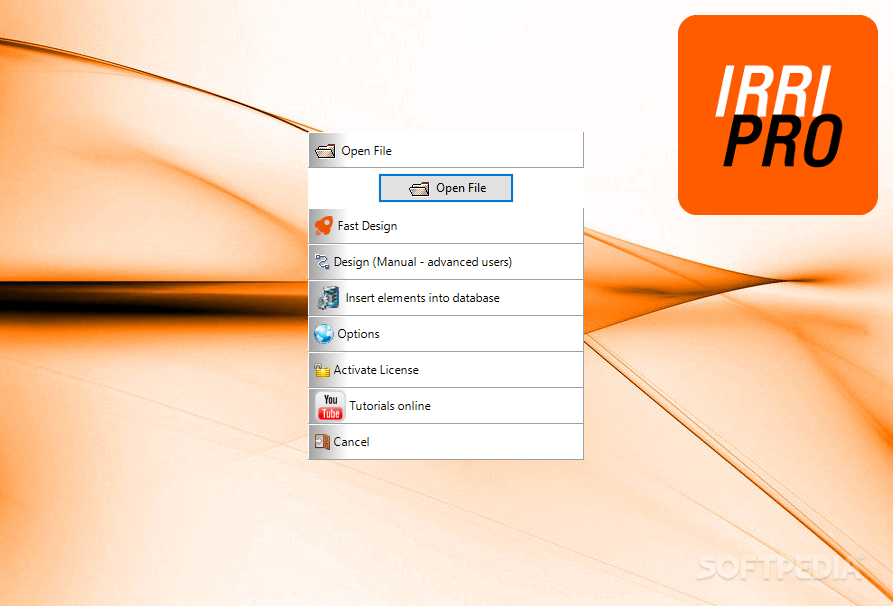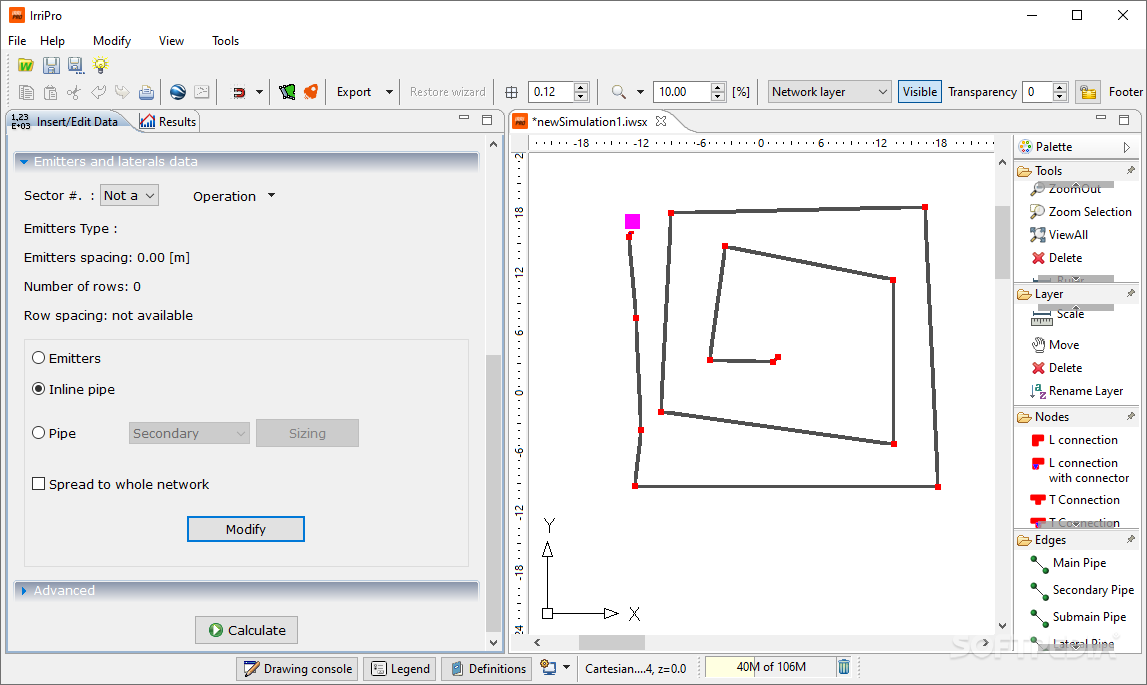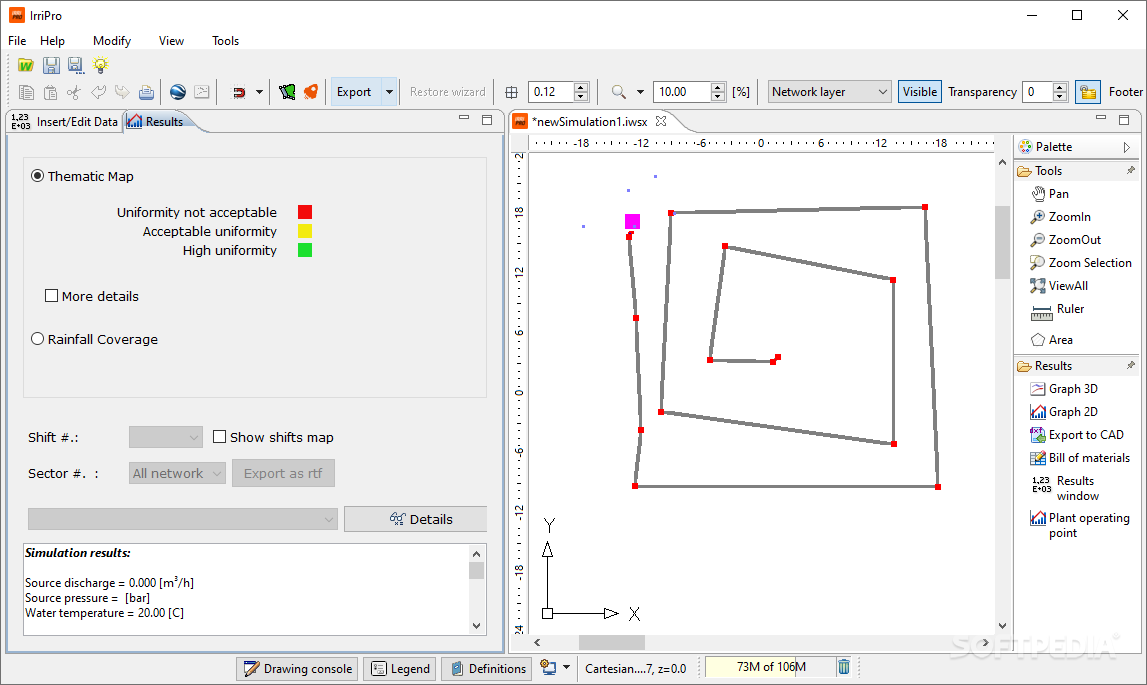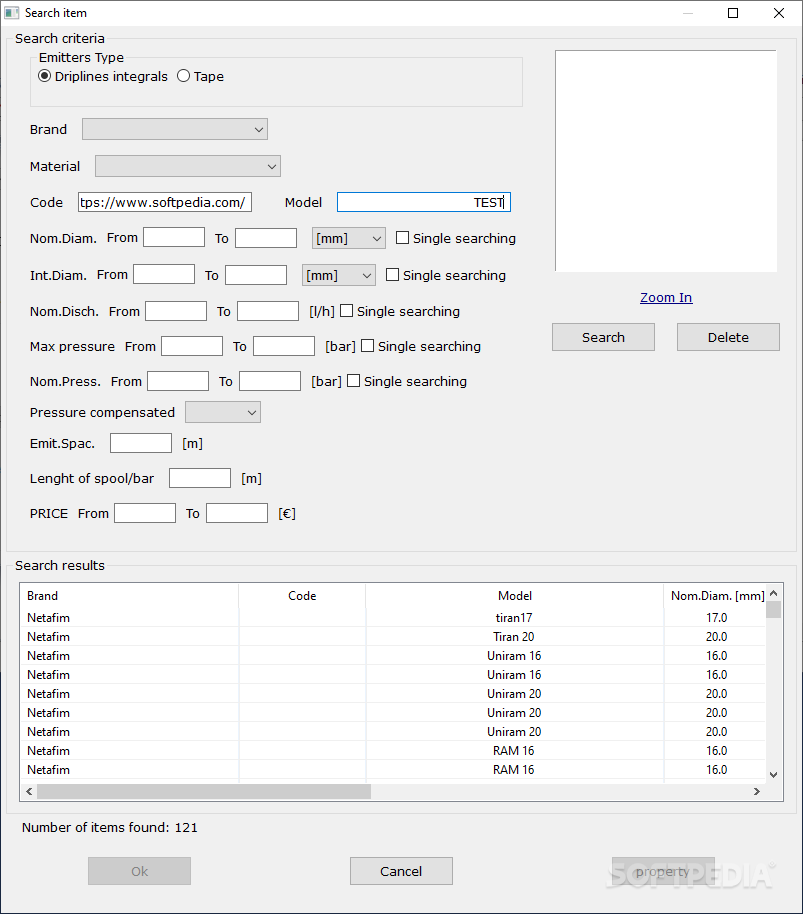
IrriPro
4.6.0Design and analyze rain and micro-irrigation systems of any size and geometry using a wizard-like approach, detect errors in the irrigation networks, and import data from Google Maps service, DXF or cartographic images
IrriPro is an advanced software application whose purpose is to help you design irrigation systems of any size and geometry, identify possible errors, as well as generate a graphical representation of a hydraulic system.
The program reveals a straightforward GUI that allows you to activate different tasks, namely open previously saved projects, design a network starting from terrain features and crop arrangement with the aid of a wizard, or skip the wizard and create freehand designs.
In addition, you are allowed to opt for a simplified analysis for carrying out an existing network calculation starting from geometric parameters, and change the unit of measurement.
The built-in wizard helps you select the irrigation network type (classic or symmetric) and set up the topography and cartography by importing data from Google Maps service, CAD files (DXF file format), or cartographic images.
What’s more, you can insert source, temperature and crop arrangement data, configure sector shape and slope, add information about emitters and laterals data, as well as set up main, secondary and submain pipes information. At the end of the wizard, you can view a summary report with the input details.
The tool offers support for a multi-tabbed environment where you can keep track of multiple projects and easily switch between them.
In case you do not want to make use of the wizard-like designer, you can manually place all sorts of nodes in the design, add pipes (main, secondary, lateral, automatic, custom), zoom in or out of the drawing, calculate the distance between two points, draw terrain bounds, find area of polygons, calculate angles, and rotate elements.
IrriPro comes with a comprehensive feature package for designing and analyzing rain and micro-irrigation systems. It can be used by engineering companies, agronomists, universities, students or manufactures.
Clean looks
The program reveals a straightforward GUI that allows you to activate different tasks, namely open previously saved projects, design a network starting from terrain features and crop arrangement with the aid of a wizard, or skip the wizard and create freehand designs.
In addition, you are allowed to opt for a simplified analysis for carrying out an existing network calculation starting from geometric parameters, and change the unit of measurement.
Design irrigation networks
The built-in wizard helps you select the irrigation network type (classic or symmetric) and set up the topography and cartography by importing data from Google Maps service, CAD files (DXF file format), or cartographic images.
What’s more, you can insert source, temperature and crop arrangement data, configure sector shape and slope, add information about emitters and laterals data, as well as set up main, secondary and submain pipes information. At the end of the wizard, you can view a summary report with the input details.
The tool offers support for a multi-tabbed environment where you can keep track of multiple projects and easily switch between them.
In case you do not want to make use of the wizard-like designer, you can manually place all sorts of nodes in the design, add pipes (main, secondary, lateral, automatic, custom), zoom in or out of the drawing, calculate the distance between two points, draw terrain bounds, find area of polygons, calculate angles, and rotate elements.
Rock-solid irrigation designer
IrriPro comes with a comprehensive feature package for designing and analyzing rain and micro-irrigation systems. It can be used by engineering companies, agronomists, universities, students or manufactures.
265 MB
Info
Update Date
Jun 09 2021
Version
4.6.0
License
Demo
Created By
Irriworks
Related software CAD










